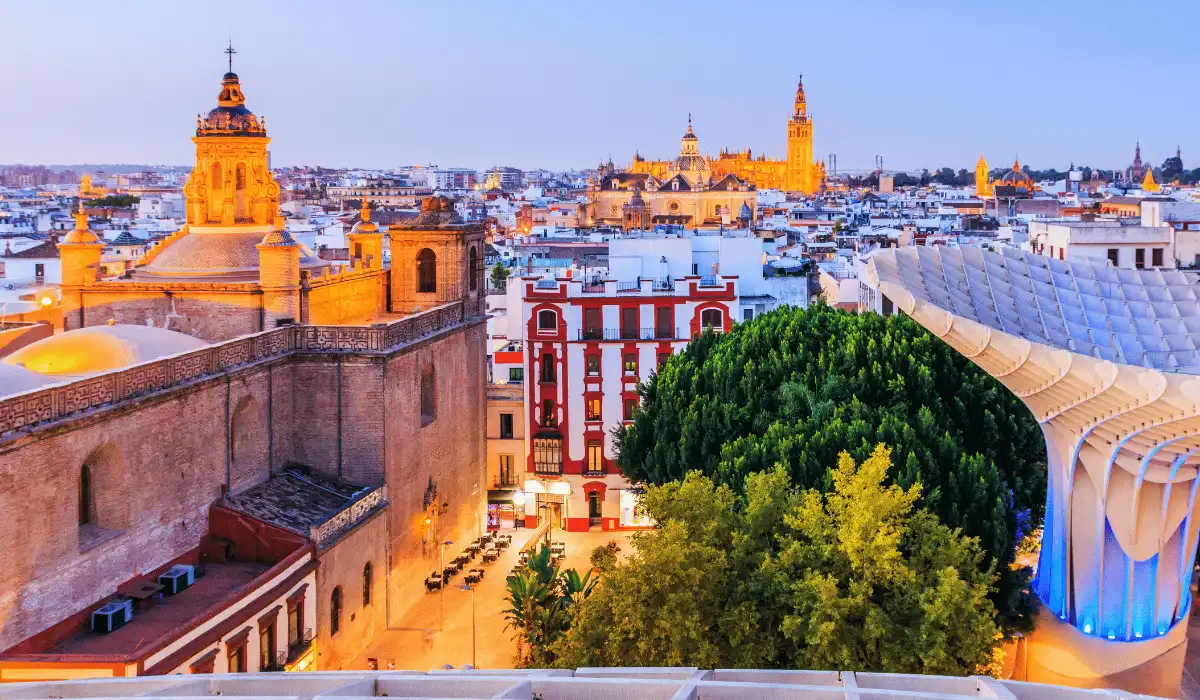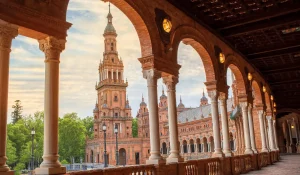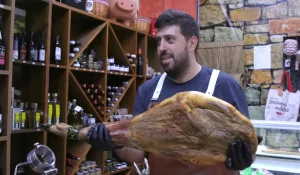Article Summary
Discover Seville through local eyes. Born and raised in this sunlit city, Elio reveals the best areas to stay for every traveler: the historic Casco Antiguo with its UNESCO landmarks, the romantic Barrio Santa Cruz filled with narrow alleys and patios, the authentic Triana across the river famed for tapas and ceramics, and the bohemian Alameda de Hércules pulsing with nightlife and creativity. With insider tips on seasons, transport, and tapas culture, this guide helps you experience Seville not as a tourist, but as a true sevillano.
My name is Elio, and I’m a sevillano through and through, born and raised right here amidst the jasmine-scented patios and sun-drenched plazas of Seville. For as long as I can remember, I’ve been guiding visitors, locals, and curious souls on a journey through our vibrant tapas culture. But before we even get to the food – and trust me, we will get to the food – the most fundamental question I always help with is: “Where should I truly *live* during my visit?”
Your accommodation isn’t just a bed; it’s your window into the soul of Seville. Each neighborhood offers a distinct flavor, a unique rhythm. Forget sterile guidebooks and generic lists. Let me share my city with you, as only a lifelong resident can, helping you choose the perfect backdrop for your unforgettable Andalusian adventure.
For the Heart of History and First Impressions: The Enduring Charm of Centro (Casco Antiguo)
For anyone setting foot in Seville for the very first time, there is really only one true starting point: our magnificent Centro Histórico, or as we call it, the Casco Antiguo. This isn’t just a neighborhood; it’s a living, breathing testament to over two millennia of history, the very pulse of Seville. Spanning nearly four square kilometers, it proudly holds its place as one of the largest historic centers in Europe, and the most expansive in all of Spain.
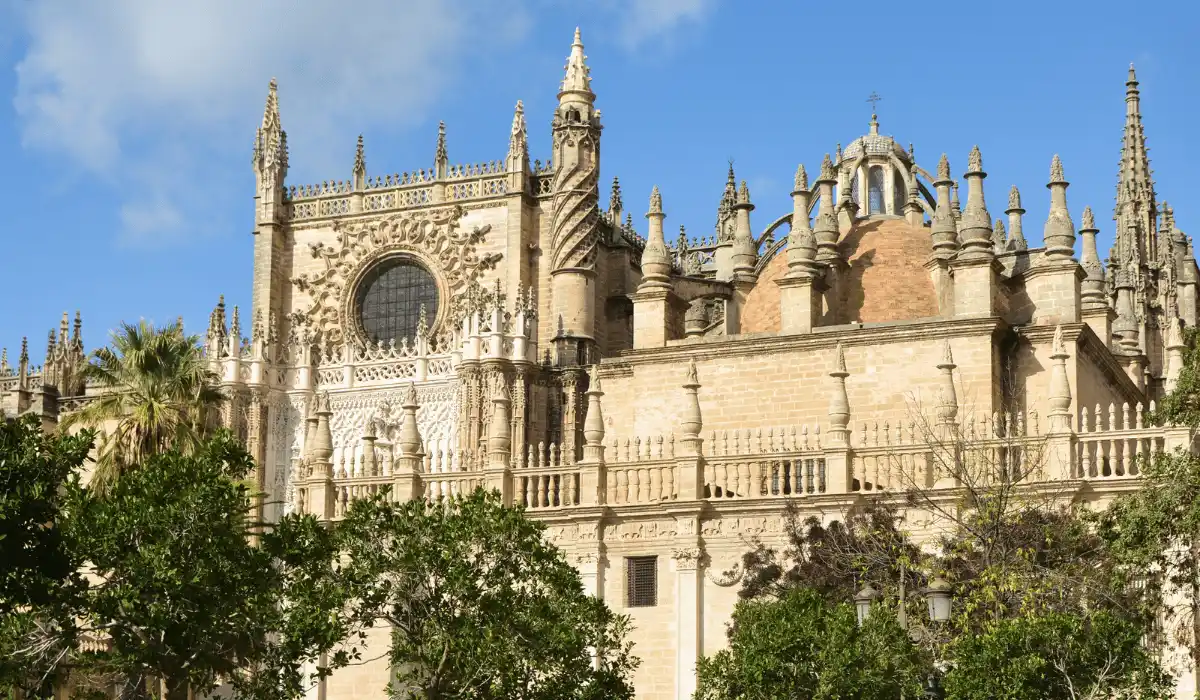
Imagine stepping out of your accommodation and being instantly immersed in a tapestry of iconic landmarks. Here, you’re always within a mere 10-minute stroll of Seville’s crown jewels: the awe-inspiring Seville Cathedral, with its intricate Gothic grandeur; the towering La Giralda, our beloved bell tower offering panoramic views; and the ethereal beauty of the Royal Alcázar, a palace straight out of a dream. These three monumental ensembles are so significant that UNESCO collectively designated them a World Heritage Site in 1987.
But the Centro is more than just monuments. It’s a labyrinthine district that proudly preserves its Islamic heritage, with narrow alleyways – some barely wide enough for two people to pass – that suddenly open up into secluded, sun-kissed plazas. These charming streets are safe, wonderfully walkable, and buzz with an energy that is uniquely Sevillian. You’ll find an abundance of dining options at every turn, from traditional taverns serving generations-old recipes to modern eateries pushing culinary boundaries. It’s the ideal location for first-time visitors, offering convenience, beauty, and a tangible connection to Seville’s storied past.
Beyond the most famous streets, the Casco Antiguo encompasses other vibrant areas like Alfalfa, Arenal, Feria, Museo, San Lorenzo, and Santa Catalina. Each boasts its own character, yet all share that quintessential Sevillian blend of history and contemporary life, with bars, cafés, and restaurants animating every corner. The district’s prosperity in the 16th-18th centuries, when Seville’s port was the gateway to the Americas, is still visible in the stately homes and grand architecture.
For the Dreamer & The Romantically Inclined: Getting Lost in the Barrio Santa Cruz
Nestled within the Casco Antiguo is perhaps Seville’s most enchanting district: the Barrio Santa Cruz. This was once Seville’s primary tourist neighborhood and, historically, its Jewish Quarter (Judería), a legacy dating back to the 12th century. It’s bordered by the Jardines de Murillo, the Real Alcázar, Calle Mateos Gago, and Calle Santa María La Blanca/San José.

Stepping into Santa Cruz is like entering a storybook. Its labyrinthine district features narrow, cobblestone streets, whitewashed houses adorned with colorful flowers, and hidden patios brimming with citrus trees. This district is a place for slow wandering, for getting delightfully lost, and for discovering unexpected beauty around every corner.
You’ll stumble upon charming plazas that serve as atmospheric gathering spots. The Plaza Doña Elvira, with its fragrant orange trees and central fountain, is a personal favorite for a quiet moment. Just around the corner, the Plaza Patio de Banderas offers some of the most stunning, picture-perfect views of the Giralda tower. The Puerta del León, with its sculpted lion, serves as the main entrance to the Alcázar, symbolizing royalty and strength.
Within these winding streets, you’ll also find architectural masterpieces like the Hospital de los Venerables Sacerdotes, a 17th-century Baroque residence for elderly priests. Its austere exterior hides an opulent interior courtyard with Italian marble columns and intricate tile work. Its church, adorned with frescoes by Juan de Valdés Leal and sculptures by Pedro Roldán, is a true Baroque gem. Today, after extensive restoration, it houses a magnificent collection of Spanish Golden Age paintings, including works by Velázquez. The adjacent Plaza de los Venerables offers a quiet respite, a hidden corner often missed by those hurrying through the main thoroughfares.
The barrio also holds significant Jewish heritage, with the Judería de Sevilla Interpretation Centre providing a starting point for exploring the history of what was once medieval Andalusia’s largest Jewish quarter. You can see remnants of the old quarter, including the Iglesia de Santa María la Blanca, originally built as a synagogue before its conversion into a Baroque church.
Staying near the Alcázar in Santa Cruz offers unparalleled convenience. Imagine being literally steps from the palace entrance and within a five-minute walk of both the Cathedral and La Giralda. Many hotels, like the Hotel Palacio Alcázar or EME Catedral Hotel, boast panoramic rooftop terraces (azoteas) with unrivaled views, perfect for an evening drink. This means you can return to your room easily during the midday heat, or make multiple visits to the extensive gardens of the Alcázar without transport worries. The pedestrianized streets ensure minimal traffic noise, and the 24-hour accessibility of plazas creates a safe environment for evening strolls.
For the Authentic Soul & the Culinary Adventurer: Across the River in Triana
Now, if you truly want to experience the vibrant, independent soul of Seville, you must venture across the Guadalquivir River to Triana. Connected to the historic center by the magnificent 19th-century Puente de Isabel II (Triana Bridge), this isn’t just a neighborhood; it’s a distinct way of life. We trianeros have a saying: “Seville is one city and Triana another.” This former suburb (arrabal) has a fiercely independent identity, rooted in its Roman origins, its significant development during Moorish rule around a 10th-century castle (later the seat of the Spanish Inquisition), and its rich cultural heritage.

Triana has long been considered Seville’s cultural heartbeat, renowned for its thriving ceramics industry. The clay-rich soil along streets like Calle Alfarería gave birth to the iconic azulejos (tiles) that adorn buildings throughout Andalusia. It’s also the birthplace of some of flamenco’s greatest artists and has a deep maritime tradition, with sailors departing from its shipyards for the New World.
Elio’s Tapas & Market Picks in Triana
As a tapas guide, Triana is my true home. The food here is honest, authentic, and utterly delicious. Your culinary journey must begin at the Mercado de Triana, located on Calle San Jorge, 6. This bustling indoor market stands on the very site of the medieval Castillo de San Jorge, which later served as the headquarters for the Spanish Inquisition from the 15th to the 18th century. Visible ruins beneath the modern structure tell tales of its dramatic past.
Inside, you’ll find over ten dining stalls alongside traditional vendors selling everything from Iberian ham (don’t miss Jamonería José Luis Romero for premium acorn-fed varieties) to fresh seafood from the Atlantic and Mediterranean, aromatic spices, and artisan cheeses. For grilled meats, try Alto Brasa, or Arrocería Criaito Triana for authentic seafood paella. Weekday mornings, between 10 AM and 1 PM, offer the most authentic atmosphere as locals do their shopping. While prepared food might be a little pricier than neighborhood bars, the quality and variety are worth it. The market also houses a small tablao flamenco, a nod to Triana’s status as a flamenco cradle, and even a basement Inquisition Museum where you can view the castle ruins through transparent floor panels.
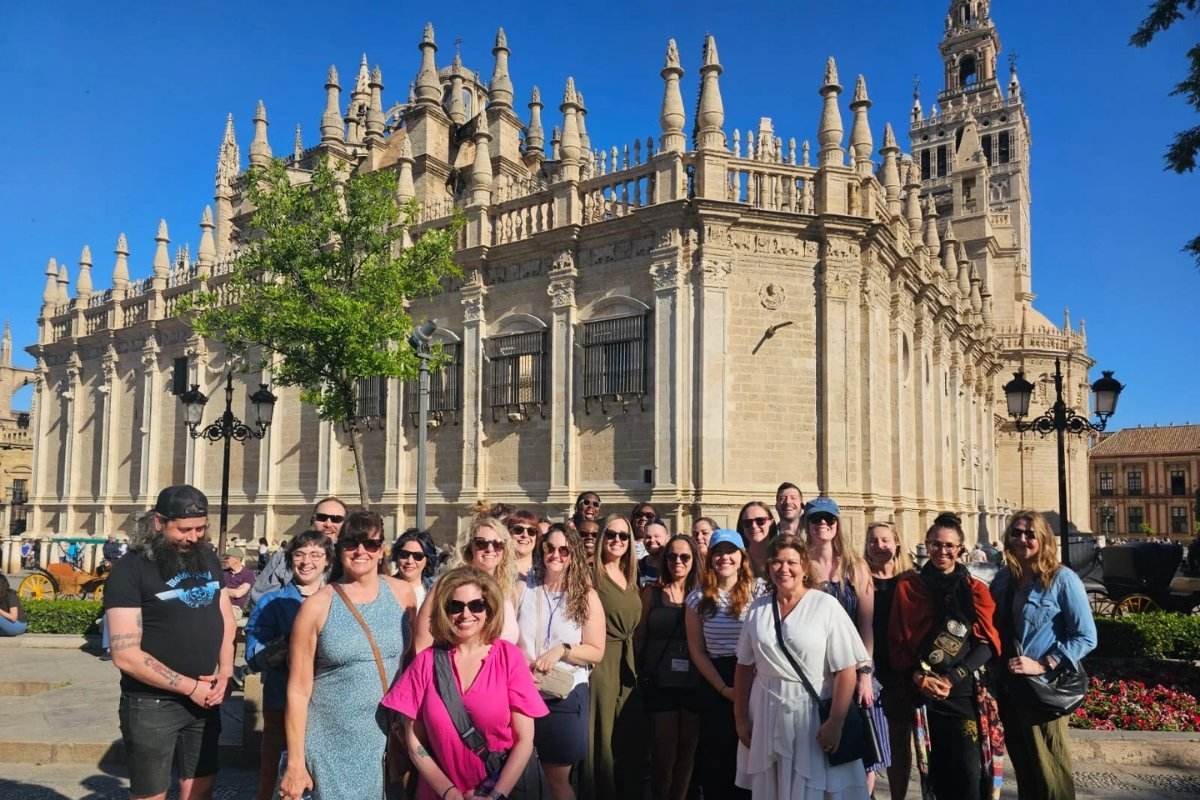
In the evening, head to Calle Betis, Triana’s iconic riverside promenade. This colorful street, lined with dozens of tapas bars and restaurants, offers some of the most incredible dining experiences with postcard-perfect views of the Torre del Oro, the Cathedral, and La Giralda across the river. Unlike some parts of Santa Cruz, dining here feels deeply embedded in authentic neighborhood life. Traditional spots like La Primera del Puente, operating since before the Spanish Civil War, serve classic Andalusian seafood. For fried fish, El Mero at Plaza del Altozano is a must, while modern venues like Abades Triana offer contemporary Mediterranean dishes with stunning presentations. The industrial-chic María Trifulca, located in the historic Faro de Triana building, perfectly blends traditional Andalusian cuisine with modern aesthetics.
The Soul of Triana: Ceramics
Triana’s centuries-old ceramic tradition is still very much alive. Visit working workshops and studios where you can observe artisans hand-painting the distinctive azulejos that define Sevillian architecture. Many offer hands-on experiences! Cerámicas Sevilla Triana, a family workshop since 1952, specializes in reproducing 15th-18th century Sevillian tiles. Cerámica 1920, founded by a renowned Triana artist, offers courses in wheel-throwing and painting. And at BarroAzul, in a 19th-century tile kiln, you can participate in three-hour tile-painting workshops, creating your own personalized souvenir.
For the Bohemian, the Night Owl & the Adventurous: The Eclectic Alameda de Hércules
If you’re seeking a different side of Seville, one that hums with bohemian energy and local authenticity, then the Alameda de Hércules is your place. Situated in the northern reaches of the Casco Antiguo, near the Macarena district, this elongated public square has a fascinating history, transforming from a medieval swamp into Seville’s most eclectic quarter.
Dating back to 1574, it’s one of Europe’s oldest gardens, marked by two marble columns at its southern end topped with statues of Hercules and Julius Caesar, salvaged from a Roman temple. This neighborhood’s working-class history fostered a spirit of inclusivity, making it a welcoming home for artists, students, LGBTQ+ communities, and immigrants.

After decades of decline, a comprehensive urban renewal in 2008 revitalized the Alameda into a vibrant cultural hub. Today, restored 18th and 19th-century buildings house independent boutiques, vintage shops, craft beer bars, vegan restaurants, and live music venues that cater primarily to locals. The nightlife here is alternative, authentic, and far removed from the tourist traps of Santa Cruz. It’s where you’ll find flamenco fusion bars, indie concert halls, and an atmosphere that feels truly Sevillian while embracing progressive values. Accommodation and dining here are often more budget-friendly than in the historic center. While it’s a bit further from the major monuments, it’s perfect for travelers who prioritize cultural immersion over convenient sightseeing.
Elio’s Essential Practical Advice for Your Seville Stay
Now that you have a taste of where to lay your head, let me offer some essential tips from a local’s perspective to make your visit even richer:
When to Visit: Seasons of Seville
- Spring (March-May): Arguably the most popular time. The weather is glorious, orange blossoms perfume the air, and you have Semana Santa (Holy Week) and the lively Feria de Abril. Be prepared for crowds and higher prices.
- Fall (September-November): Another fantastic time, with pleasant temperatures and fewer crowds than spring. October is a particular favorite for many locals and Europeans.
- Winter (December-February): Mild temperatures make it ideal for exploring without the heat, and there are fewer tourists. January and February are great for experiencing the orange harvest.
- Summer (June-August): Be warned, Seville gets incredibly hot! Many locals head to the coast. If you visit, embrace the siesta, explore in the early mornings and late evenings, and enjoy the lively nights on bar terraces.
Navigating Our Streets: Getting Around Seville
Seville is a city best explored on foot, especially the historic center. Its narrow streets are simply not made for cars. Wear comfortable shoes! However, for longer distances or when your feet need a rest, our public transport is efficient.
- Buses: An extensive network covers the entire city. Look for the circular C1, C2, C3, and C4 lines for routes around the center. A single ticket costs around €1.40. You can buy a rechargeable ‘Tarjeta Multiviaje’ for cheaper fares per journey (around €0.69-€0.76 per trip, with a €1.50 card deposit and minimum €7 top-up). Tourist cards for 1 or 3 days are also available.
- Tram (MetroCentro): A single line (T1) runs through the city center, connecting Plaza Nueva to areas like San Bernardo. It’s convenient for short distances.
- Metro: Seville has one metro line, mainly connecting the center to residential areas.
- Taxis & Ride-Sharing: Readily available, white cars with a diagonal yellow stripe. Fares are metered, typically €7-€15 within the center. Uber and Cabify also operate here.
Embracing the Siesta
The siesta is very real in Seville, especially in the hotter months. It’s not just a nap; it’s a cultural pause where many small shops, businesses, and some attractions close between roughly 2 PM and 5 PM. This is a time for lunch, rest, and avoiding the peak heat. Don’t fight it – embrace it! Plan your sightseeing for the mornings and late afternoons/evenings. Use this time to have a leisurely lunch, relax at your accommodation, or visit major attractions and museums that often stay open. Many locals eat dinner late, often around 9 or 10 PM.
The Sacred Art of Tapas (El Tapeo)
As your tapas guide, this is my specialty! Tapas are more than just small plates; they are a social experience, a way of life.
- Sharing is Key: Order a few plates to share with your companions. If you love a dish, you can often order a ración (larger plate) or a plato (full dish).
- Order Gradually: Don’t order everything at once! Many tapas are pre-prepared, and you don’t want them all to arrive simultaneously. Plus, you might see something delicious passing by and want to try it.
- Stand at the Bar: Many traditional tapas bars have locals standing at the bar, drinks resting on sherry casks. This is a great way to soak up the atmosphere and sometimes even get faster service.
- Local Specialties: Don’t miss espinacas con garbanzos (spinach with chickpeas), salmorejo (a thicker, cold tomato soup), montadito de pringá (pulled pork buns), carrillada de cerdo (braised pork cheeks), and solomillo al whisky (pork tenderloin in whisky sauce). And of course, the king: Jamón Ibérico.
- Drinks: A crisp, cold beer (una caña) is perfect. For wine, try a local sherry or a refreshing tinto de verano (red wine with soda). Ordering sangria might mark you as a tourist – save it for special occasions!
- Tipping: Tipping is appreciated but not always expected. For good table service, 5-10% is fine. For a quick drink at the bar, leaving a euro or two in coins is a nice gesture.
Hidden Gems & Local Secrets
Beyond the main attractions, always keep an eye out for hidden patios, local workshops, and small plazas. Venture a few streets away from the main tourist routes, and you’ll often find more authentic, budget-friendly bars and restaurants. Don’t be afraid to try a place that’s packed with locals – that’s often a sign of the best food!
Seville is a city that rewards curiosity and a willingness to embrace its unique pace. No matter where you choose to stay, or what adventures you seek, this city will capture your heart.
We also offer private tours for groups in Seville — the perfect way to experience the city through local eyes, with personalized itineraries, authentic tapas stops, and insider stories that bring Seville to life.
Author

I’m Elio Tovani, a local Sevillian guide with WSET Level 2 certification. Through the Seville Tapas Tour, I combine history, culture, and gastronomy in small, authentic experiences across my city’s most charming neighborhoods. My passion for wine and Andalusian traditions drives me to share the real taste of Seville with every guest.
